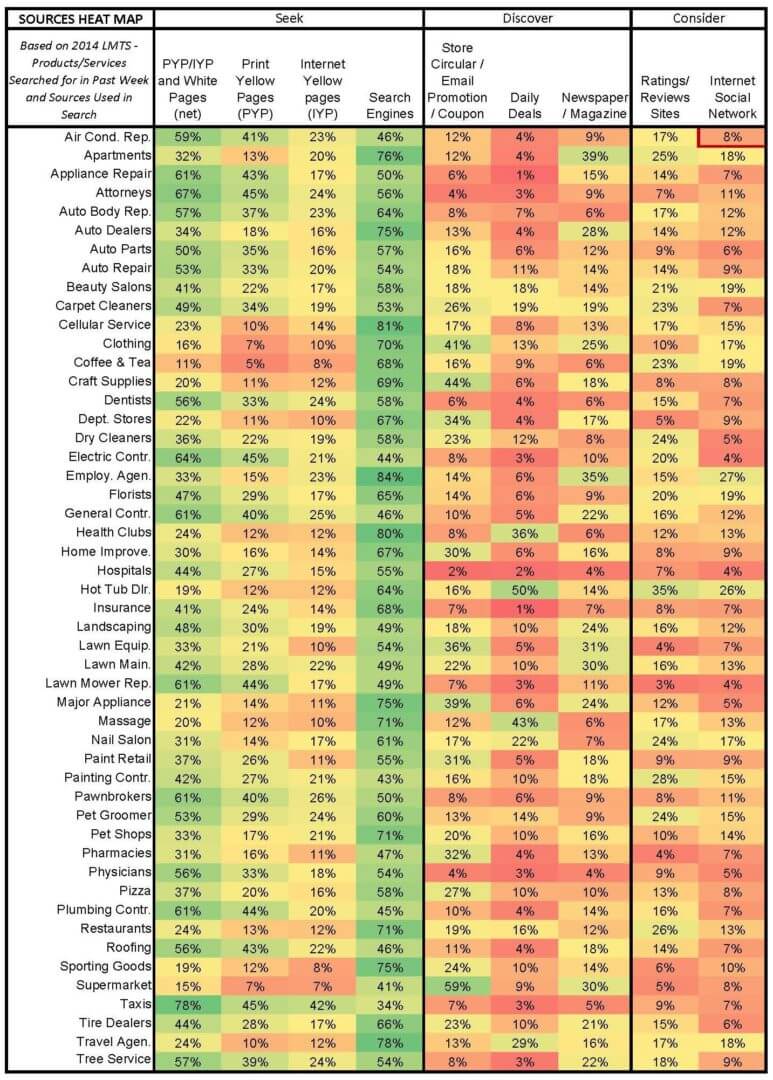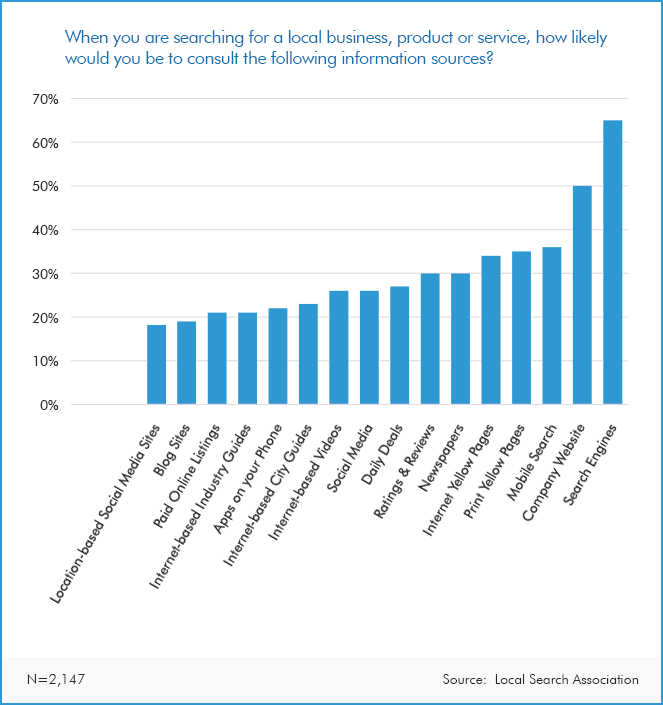The Best Performing Search Media For Your Business’ Marketing Strategy
Columnist and Local Search Association VP Wesley Young shares data that takes a look at 50 business categories and how they perform in a variety of marketing media including search engines, directories, review sites and social media.
For the first time in the last 10 years, the last placed team in the NBA won the first pick of the NBA draft.
Unlike in the NFL, the first team on the NBA’s draft board is only given the highest chance to win the first pick — it is not guaranteed. The NBA awards its top team a 25% chance to win the first pick, the second team 19.9%, the third 15.6%, and so on. That means the top team on the draft board still has a 75% chance that someone else will win the first pick.
Marketing channels are more like the NBA than the NFL in that occupying first place might not mean you get a majority of the market. Because search is not an exclusive marketing choice, you might even get a majority of users but not a majority of the use or time spent on various media.
The Local Search Association (LSA) asked consumers to identify the sources they use in looking for local businesses, products, or services, and rate the likelihood of using that source from 1-5, with 5 being extremely likely.
The below chart, put together by Marketing Sherpa using LSA data, shows those responses with a 5 rating. The data illustrates that, while search engines are clear leaders in the way that consumers look for local businesses and services, other media platforms and competition cannot be ignored.
Even when search engines and mobile search are combined, the cumulative volume of use of all other media significantly exceeds that combined number. Thus, it is important for SMBs to engage a cross-media marketing strategy to capture a diverse audience in different stages of the path to purchase.
However, this breadth in media channels presents a problem for marketers. Audiences are now much more fragmented, and each marketing channel reaches a narrower group. The thought of trying to use all of these channels is overwhelming for the resource-constrained SMB. How can SMBs effectively market in such a broad selection of media?
The answer lies in a Bruce Lee-esque kung fu technique of using the energy of the problem instead of trying to resist it. Each channel has its own strengths and presents an opportunity to market more efficiently and take advantage of those strengths. Simply put, invest in marketing where the return is greatest.
Targeted marketing reaches the right consumers and helps make marketing efforts more efficient. There are many ways to focus advertising such as by geography, demographics, or (as we discuss below) targeting media most effective for a particular business category.
This year’s Local Search Association Local Media Tracking Study, conducted by Burke, gauged how consumers use different media channels based on business category. Eight thousand (8,000) consumers were asked what products and/or services they searched for and what sources they used for the search in the past week.
Some of the results are summarized in the below heat map, with dark green indicating the strongest use fading to red for the weakest use. Respondents may choose more than one source to accommodate cross-media search while shopping, and thus the combined percentages usually exceed 100%.
The results reveal that there are definite trends in consumer shopping behavior related to different media and different products or services.

Source: LSA 2015 Local Media Tracking Study conducted by Burke
Even though search engines dominated with a shade of green across almost every category, there was still a wide range of use depending on category with an up to 50% response variance.
The top business categories, with 80% or more of searchers using search engines, were employment agencies with 84%, cellular service with 81%, and health clubs at 80%. On the other hand, only 34% of taxi searches used search engines.
There often was an inverse relationship between search engines and directory listings, as 78% of taxi searches used PYP/IYP/WP (print yellow pages, Internet yellow pages and white pages).
Combined PYP/IYP/WP performed particularly well in residential home services such as electrical contractors at 64%, plumbing contractors at 61%, and appliance repair at 61%. Surprisingly, they also outperformed search engines in professional services such as attorneys at 67% and physicians at 56%.
Some highlights from other media include the following:
- Store circulars, coupons and email promotions were strongest at retail stores such as supermarkets at 59%, craft stores at 44%, and clothing at 41%.
- Daily deals were strong in massage services at 43%, health clubs at 36%, and travel agencies at 29% — perhaps those services that consumers want to sample before committing more to.
- Newspapers and magazines were strongest in apartments at 39% and employment agencies at 35%, both strong traditional classified ad categories.
- Online review sites did well with painting contractors at 28%, restaurants at 26% and nail salons and pet groomers at 24%.
- Social media’s best categories were employment agencies at 27% and hot tubs at 26%.
Conclusion
It is important for SMBs to engage in cross-media marketing strategies to capture a diverse audience in different stages of the path to purchase. But with the explosion in number of media outlets being utilized by consumers today, the marketplace is increasingly fragmented, and reaching consumers across all media channels is a daunting task.
Targeting the right consumers will make marketing more efficient, increase return and help generate the sufficient audience volume. There are a number of ways that can help: developing an effective mobile strategy, using geo-location to target consumers, and per the above, using the best performing media outlets for particular business categories.
While individual results will vary, there are definite trends in different media performing better in certain business categories. Marketers can help SMBs identify those top media channels that provide better performance based on the type of business and design for them an effective cross-media marketing strategy.
Opinions expressed in this article are those of the guest author and not necessarily Search Engine Land. Staff authors are listed here.
Related stories

